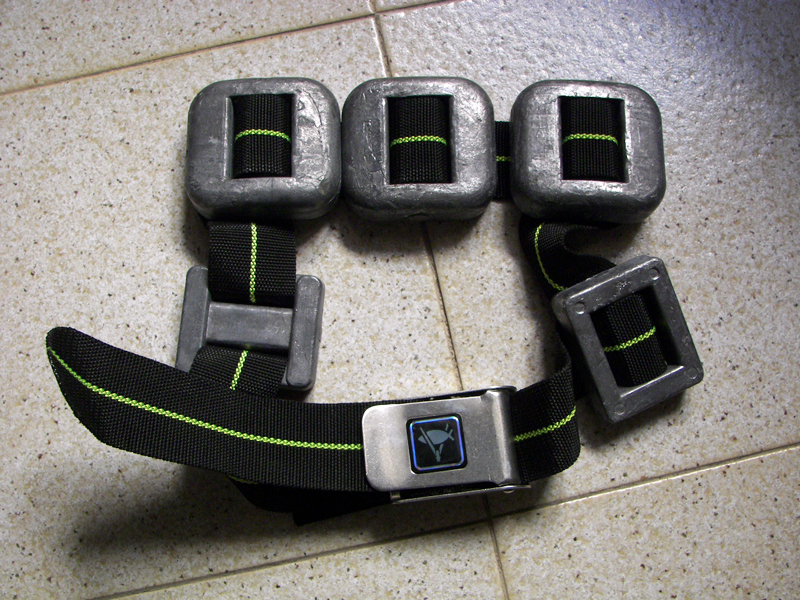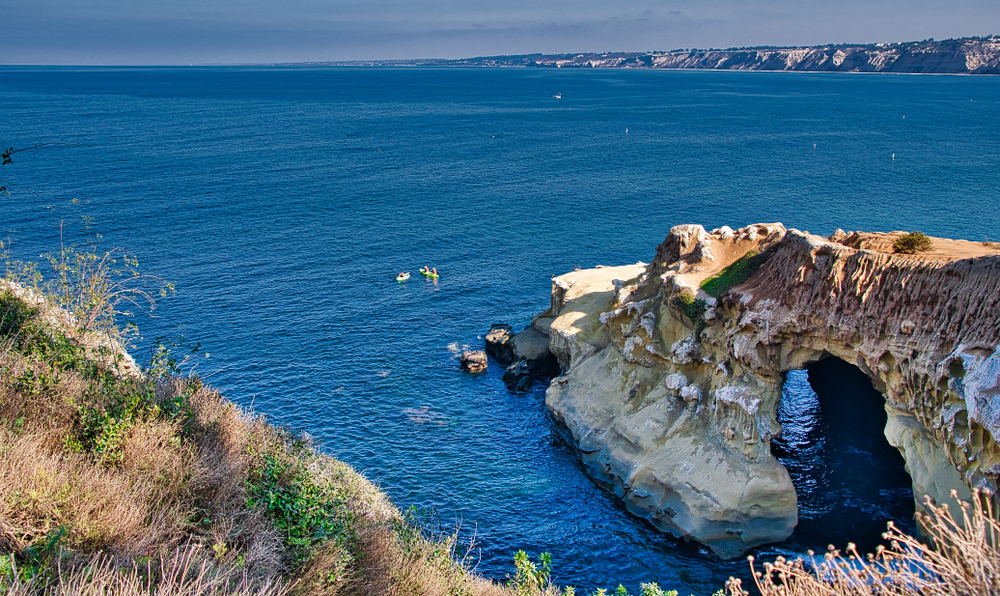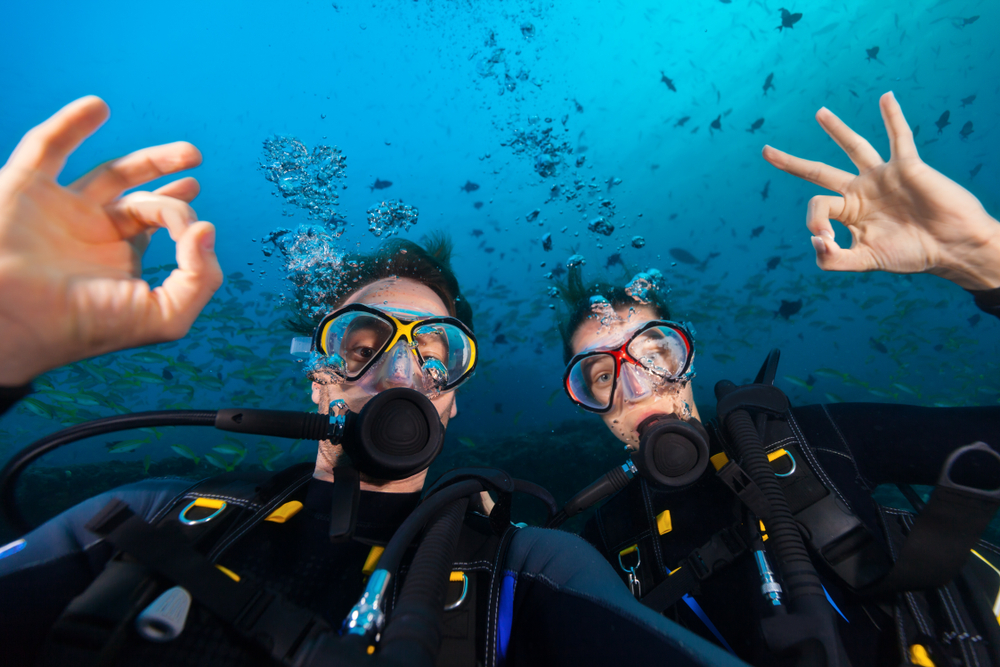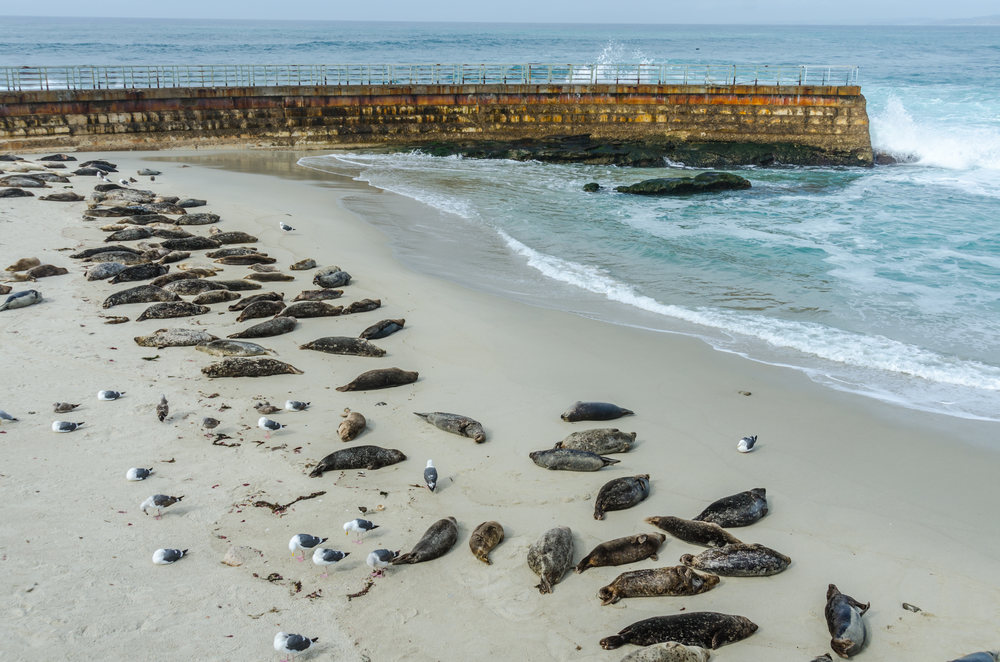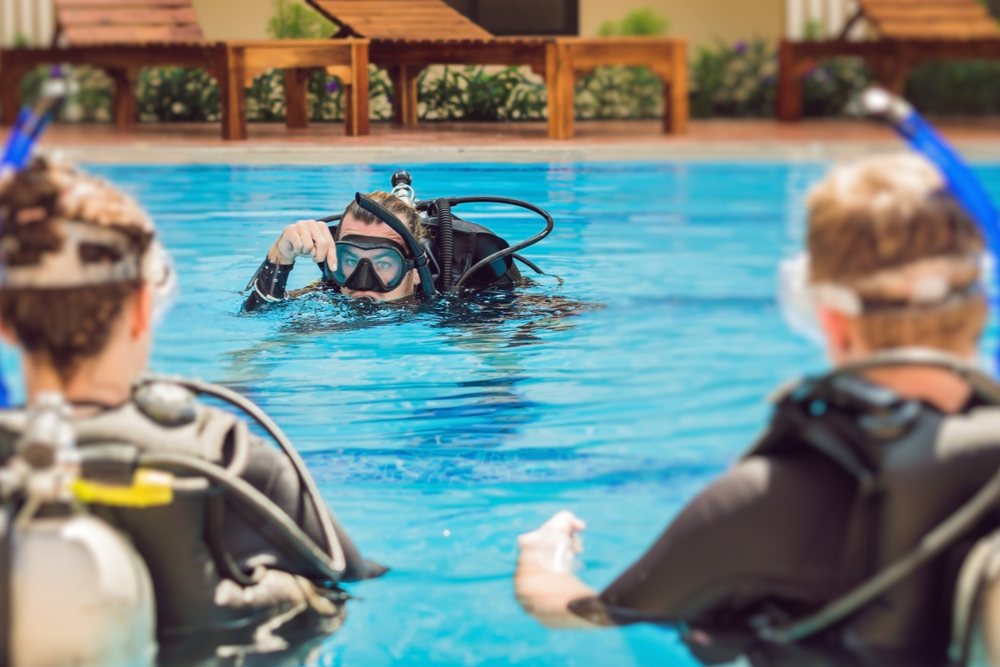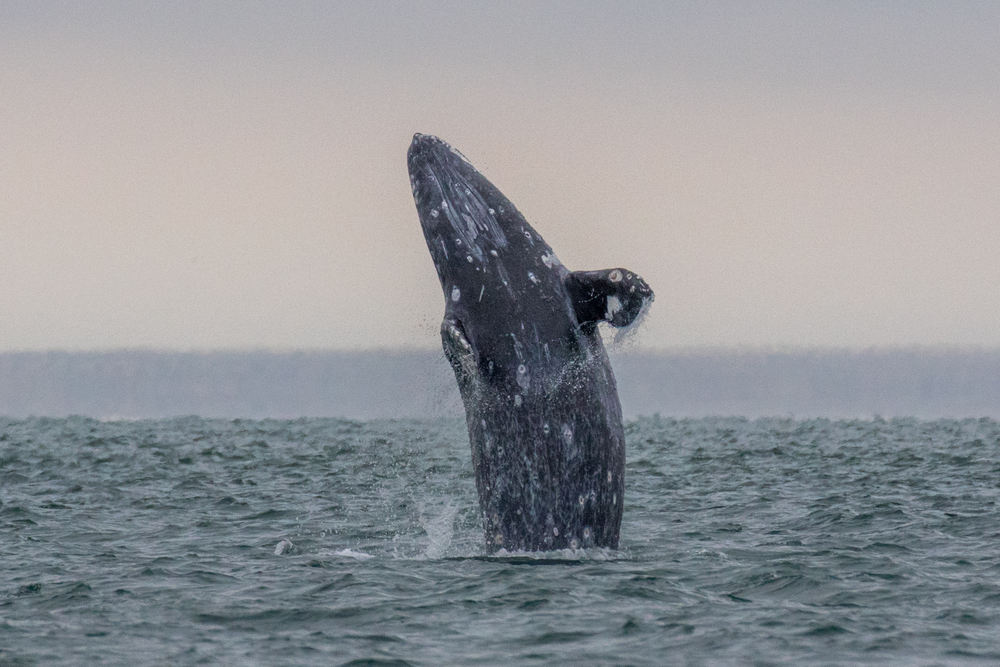Diving weighting system
Divers wear weighting systems, weight belts or weights to counteract the buoyancy of other diving equipment, such as diving suits and aluminium diving cylinders. The scuba diver must be weighted sufficiently to be slightly negatively buoyant at the end of the dive when most of the breathing gas has been used, and needs to maintain neutral buoyancy at safety or obligatory decompression stops. During the dive, buoyancy is controlled by adjusting the volume of air in the buoyancy compensation device (BCD) and, if worn, the dry suit, in order to achieve neutral or positive buoyancy as needed. The amount of weight required is determined by the maximum overall positive buoyancy of the fully equipped but unweighted diver anticipated during the dive, with an empty buoyancy compensator and normally inflated dry suit. This depends on the diver’s mass and body composition, buoyancy of other diving gear worn (especially the diving suit), water salinity, weight of breathing gas consumed, and water temperature. It normally is in the range of 2 kilograms (4.4 lb) to 15 kilograms (33 lb). The weights can be distributed to trim the diver to suit the purpose of the dive.
Buoyancy control
Buoyancy control is considered both an essential skill and one of the most difficult for the novice to master. Lack of proper buoyancy control is likely to disturb or damage the surroundings, and is a source of additional and unnecessary physical effort to maintain precise depth, which also increases stress.
The scuba diver generally has an operational need to control depth without resorting to a line to the surface or holding onto a structure or landform, or resting on the bottom. This requires the ability to achieve neutral buoyancy at any time during a dive, otherwise the effort expended to maintain depth by swimming against the buoyancy difference will both task load the diver and require an otherwise unnecessary expenditure of energy, increasing air consumption, and increasing the risk of loss of control and escalation to an accident.
A further requirement for scuba diving in most circumstances, is the ability to achieve significant positive buoyancy at any point of a dive. When at the surface, this is a standard procedure to enhance safety and convenience, and underwater it is generally a response to an emergency.
The average human body with a relaxed lungful of air is close to neutral buoyancy. If the air is exhaled, most people will sink in fresh water, and with full lungs, most will float in seawater. The amount of weight required to provide neutral buoyancy to the naked diver is usually trivial, though there are some people who require several kilograms of weight to become neutral in seawater due to low average density and large size. This is usually the case with people with a large proportion of body fat. As the diver is nearly neutral, most ballasting is needed to compensate for the buoyancy of the diver’s equipment.
Trim
Trim is the diver’s attitude in the water, in terms of balance and alignment with the direction of motion. Accurately controlled trim reduces swimming effort, as it reduces the sectional area of the diver passing through the water. A slight head down trim is recommended to reduce downthrust during finning, and this reduces silting and fin impact with the bottom.
Trim weighting is mainly of importance to the free-swimming diver, and within this category is used extensively by scuba divers to allow the diver to remain horizontal in the water without effort. This ability is of great importance for both convenience and safety, and also reduces the environmental impact of divers on fragile benthic communities.
At Trident Divers we will teach you how effectively control buoyancy.


